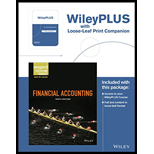
Concept explainers
Balance Sheet Items:
Balance sheet is a financial statement that provides details of available assets and owed liabilities from investing and financial activities of the business. Since this statement reveals the financial health of company, balance sheet is also called the “
Assets
Assets are the resources owned by a business to carry out production and sales activities. The assets are associated with a future economic value that can be expressed in terms of monetary values. All the assets are meant to provide future services or benefits. Examples include cash,
Liabilities
Liabilities are the obligations against assets that are to be fulfilled in the future. Most of the businesses borrow money or buy goods and services from a supplier on credit. This incurs a future obligation on the businesses, which is to be fulfilled in the future. Examples include loans payable, interest payable, accounts payable, wages payable, etc.
Stockholders’ equity
The amount invested to a business by its shareholder or the donated capital and earnings from operations less any dividends issued gives the stockholders’ equity. The stockholders’ equity gives the ownership claim on the total assets of a business. The amount left after satisfying the creditors, belongs to the stockholders’ claim on the assets. It also includes common stock and
To identify: Categorize the given balance sheet items as an asset, liability, or stockholders' equity.
Want to see the full answer?
Check out a sample textbook solution
Chapter 1 Solutions
Financial Accounting, 10e WileyPLUS Registration Card + Loose-leaf Print Companion
- I need help with this financial accounting question using accurate methods and procedures.arrow_forwardStarlight Medical Equipment maintains inventory cards. Item #456 shows: beginning 210 units, received 320 units, issued 390 units. Physical count reveals 125 units. Determine the missing units. Need answerarrow_forwardReva Systems budgeted sales at 30,000 units at $80 per unit. The actual sales were 29,000 units at $83 per unit. What was Reva Systems' sales price variance?arrow_forward
- Viler business purchased a 6-month, 8% note receivable for $50,000 on March 1. What is the amount of interest income that should be recorded on June 30?arrow_forwardStarlight Medical Equipment maintains inventory cards. Item #456 shows: beginning 210 units, received 320 units, issued 390 units. Physical count reveals 125 units. Determine the missing units.arrow_forwardCan you solve this general accounting problem with appropriate steps and explanations?arrow_forward
- I want to this question answer for General accounting question not need ai solutionarrow_forwardCan you help me solve this general accounting problem using the correct accounting process?arrow_forwardPlease provide the correct answer to this general accounting problem using accurate calculations.arrow_forward

 AccountingAccountingISBN:9781337272094Author:WARREN, Carl S., Reeve, James M., Duchac, Jonathan E.Publisher:Cengage Learning,
AccountingAccountingISBN:9781337272094Author:WARREN, Carl S., Reeve, James M., Duchac, Jonathan E.Publisher:Cengage Learning, Accounting Information SystemsAccountingISBN:9781337619202Author:Hall, James A.Publisher:Cengage Learning,
Accounting Information SystemsAccountingISBN:9781337619202Author:Hall, James A.Publisher:Cengage Learning, Horngren's Cost Accounting: A Managerial Emphasis...AccountingISBN:9780134475585Author:Srikant M. Datar, Madhav V. RajanPublisher:PEARSON
Horngren's Cost Accounting: A Managerial Emphasis...AccountingISBN:9780134475585Author:Srikant M. Datar, Madhav V. RajanPublisher:PEARSON Intermediate AccountingAccountingISBN:9781259722660Author:J. David Spiceland, Mark W. Nelson, Wayne M ThomasPublisher:McGraw-Hill Education
Intermediate AccountingAccountingISBN:9781259722660Author:J. David Spiceland, Mark W. Nelson, Wayne M ThomasPublisher:McGraw-Hill Education Financial and Managerial AccountingAccountingISBN:9781259726705Author:John J Wild, Ken W. Shaw, Barbara Chiappetta Fundamental Accounting PrinciplesPublisher:McGraw-Hill Education
Financial and Managerial AccountingAccountingISBN:9781259726705Author:John J Wild, Ken W. Shaw, Barbara Chiappetta Fundamental Accounting PrinciplesPublisher:McGraw-Hill Education





